 Amy Sedeño Amy Sedeño |
In a world with evolving concerns and values, the hospitality industry is embracing eco-friendly practices and the importance of sustainability as critical components to a successful branding strategy.
After all, studies show that 80 percent of 18 to 29-year-olds consider it important when booking a trip that a company offer sustainable travel options, and 90 percent consider a travel company’s commitment to ethical travel an essential part of their booking journey. From internationally-known brands like Hyatt, Virgin, Hilton and Marriott to independent boutique properties, hotels are taking an active role in shaping industry standards for sustainable travel. But how does a hotel brand successfully navigate the world of sustainability in an ethical and impactful way with a message that’s well-received by its key audiences? Here’s where a public relations agency well-versed in green marketing comes in.
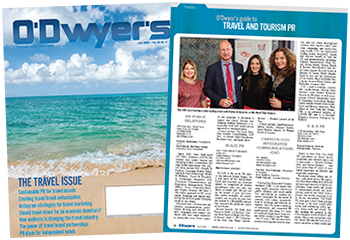 |
| This article is featured in O'Dwyer's Jul. '19 Travel & Int'l PR Magazine. |
Working with sustainable, ethical brands requires rethinking the standardized PR process. Agencies are now looking at smaller budgets; unique, purpose-driven narratives; and savvy consumers that understand and seek sustainable practices. To top it off, many of these brands are not only looking to impact the environment and disrupt their industry but also to shift consumer habits and behaviors. This requires a new approach to PR programs inclusive of tailored media relations, awareness campaigns, thought leadership, a deep-dive of the topic of sustainability and a focus on the people and communities directly involved with the brands.
Through a strong public relations and messaging campaign, agencies can help sustainable travel brands, from hotels to products, effectively define and communicate their core brand values without getting diluted in an industry that’s becoming increasingly saturated. Here are three things PR agencies working with ethical, sustainable brands must keep in mind when developing strategies for this new wave of travel brands and products:
Knowledge and awareness is critical
In the client onboarding process or discovery meeting, it’s important to have an in-depth discussion of the sustainable resources and practices that will later help to shape the communications plan. Research is key at this stage, equipping agencies with the know-how to lead their clients through successful campaigns. Agencies should have a general understanding of what the word sustainability encompasses, its lingo, best practices and certifications related to sustainable businesses such as Green Globe, the Green Hotels Association and The World Travel and Tourism Council, among others.
This also transcends to a plan that includes a thought leadership program that will take your clients to key sustainability conferences, securing speaking opportunities that will showcase them as leaders in the eco-conscious movement and securing guest blog posts and social media appearances in outlets read and seen by their target audiences. At this discovery phase, and throughout the partnership, agency education should remain ongoing, subscribing to relevant industry blogs, attending keynotes and conferences and keeping up with new trends and headlines will allow PR practitioners to act as an expert counsel and source of knowledge for their clients.
Mindfulness of ROI and expenses
While sustainable brands often have smaller budgets, that doesn’t mean their campaigns should be less impactful. Agencies should take a thoughtful approach to budgets and seek how to minimize client expenses while maximizing exposure. For sustainable hotels, this might mean piggybacking on their local tourism board for media exposure; working with media/influencers on-the-ground versus investing in costly airfare; guiding the hotels and brands to work with influencers to produce content (videos/an image bank/social media posts) in exchange for stays and perks versus paid partnerships; and collaborating with like-minded, recognizable brands that can strengthen your client’s awareness and message and increase visibility with the right audience.
It’s important to highlight the macro vs. micro influencer dichotomy and understand the power of a trusted recommendation. While large numbers might seem attractive, working with micro and mid-level influencers allows brands to create genuine partnerships that yield a higher return on investment as well as content that is highly engaging and likable.
It’s not enough to say you’re sustainable
Saying something is “eco-friendly” or “fair trade” is no longer enough in a saturated market competing for media attention. It’s important to understand your client’s key differentiators and expand that message into verticals that include a business story, a lifestyle story, a foodie story, and angles that move the needle beyond the sustainability narrative. While niche green hospitality outlets are a great awareness resource to tell your sustainability story and highlight your programs and green efforts, they often lack the reach of their larger mainstream counterparts. It’s the job of the PR agency, through creative storytelling, to weave in your sustainability story and its environmental benefits to a larger or differentiating theme that effectively engages media covering other beats.
One great example is Hotel El Ganzo, a 70-room boutique hotel in San Jose del Cabo. Last year, El Ganzo launched a sustainability overhaul that included recycling and water conservation programs and plastics reduction. Rather than just focusing on the technical aspects of the news, media angles also incorporated information about their wellness/health programs, eco-friendly retreats, and seasonal dining offers.
Other stories can leverage mediable dates like Earth Day, celebrated on April 22. Cala Luna Boutique Hotel & Villas, a 39-room boutique hotel in the beach town of Tamarindo, Costa Rica launched a two-day Earth Day package that provided 30 percent off on all bookings made through their websites and donated five percent of each reservation to a local charity dedicated to Beach Clean Ups. Other important dates that can be turned into creative storytelling include World Oceans Day, World Wildlife Day, World Environment Day and World Rainforest Day.
A complete media relations program should also promote green aspects of the brand through blogs, email blasts, social media channels and websites to ensure that all points of customer contacts are covered and to extend the life of media coverage. However, as Eugenio Lopez Matos, Assistant to the General Manager for Royal Isabela Puerto Rico said, “the message must be authentic. In order to communicate that a brand is sustainable, it must truly be sustainable. If the term is just used as a marketing plug, it won’t resonate with the consumer.”
***
Amy Sedeño is Director at Carolyn Izzo Integrated Communications (CIIC) in Miami.


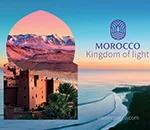 Weber Shandwick is providing PR and marketing communications services to the Moroccan National Tourist Office in New York.
Weber Shandwick is providing PR and marketing communications services to the Moroccan National Tourist Office in New York.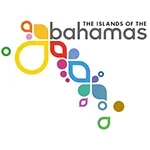 Finn Partners has filed its six-month contract with the Bahamas Ministry of Tourism, Investments & Aviation, which is worth $240K.
Finn Partners has filed its six-month contract with the Bahamas Ministry of Tourism, Investments & Aviation, which is worth $240K.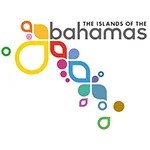 Weber Shandwick wrapped up its work for the Ministry of Bahamas at the end of 2023.
Weber Shandwick wrapped up its work for the Ministry of Bahamas at the end of 2023.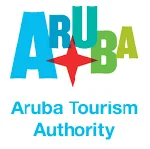 The Aruba Tourism Authority is boosting its budget 29.4 percent to $2.2M at Zeno Group, according to its 2024 contract, effective Jan. 1.
The Aruba Tourism Authority is boosting its budget 29.4 percent to $2.2M at Zeno Group, according to its 2024 contract, effective Jan. 1. As inflation continues to impact spending, consumers are revisiting their list of what they’re willing to spend more of their money on. Luckily for those in the travel industry, experiences seem to be trending up on the “splurge” list.
As inflation continues to impact spending, consumers are revisiting their list of what they’re willing to spend more of their money on. Luckily for those in the travel industry, experiences seem to be trending up on the “splurge” list. 


 Have a comment? Send it to
Have a comment? Send it to 
No comments have been submitted for this story yet.